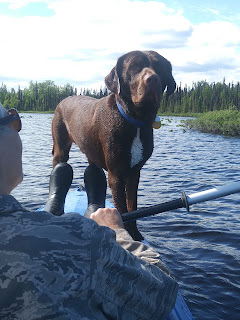Wet and dry summers have inverse impacts on our vegetable and berry harvests. Past experience reinforces the importance of planting/harvesting/storing more than we can eat in a single year.
Last year was so rainy that our berry harvests (all types) were HUGE, in both fruit size and quantity. We gathered close to six gallons of raspberries, alone. However, slugs liked the wet conditions, too. They invaded the vegetable gardens, chewed leaves to lace and invaded every nook and cranny of broccoli and cauliflower heads. GROSS! Root crops and greenhouse plants were spared, but all the time and effort to seed, transplant, and care for scores of leafy veggies … yielded a few measly winter weeks of those vegetable dishes.
This hot, dry summer is very different. Some veggies and herbs bolted (flowered) early, after which they degrade, but others look hale and hardy, especially old reliables like potatoes and brassicas (cabbage, etc). On the other hand,, the brassica buttoned, which I had never even heard of, which is when they fail to set heads,, or grow only tiny ones. so I am harvesting the leaves to can for winter or summer side dishes.
Every afternoon, I gather leaves and flowers for the evening salad. The last two weeks featured leaves of beets, lettuce, carrots, chives, turnips, radish, and mustard, and the pretty, pink, yellow, and white flowers of the last four. I make a tasty dip with carrot greens, too.
Unfortunately, the
berry production in this weather is PUNY, in both size and number. Last year, high bush cranberries
numbered 15 – 25 on a strand. This
year: 3 – 5 tiny hard ones. Prior years we had to net our six haskap
bushes to deter birds. This year, they
barely visit. Similar reductions are
clear in currants, gooseberries, and haskaps.
Only the saskatoons and raspberries seem to have the same number of
berries, but they will likely be smaller fruit.
Winter weather affects food production, too. Two perennials, lovage (tastes like celery) and sorrel (a citrusy leafy green) did not overwinter, to my dismay. They had been so robust for several years that I did not seed any others. I miss them both and will have to start over next year. Perhaps it was the very cold temperatures in November with no insulating snow cover. Even the heavy mulching of those gardens with birch leaves was apparently inadequate.
One edible weed I like so much that I actually let it proliferate in my raised bed gardens. It is called lamb’s quarter. This plant favors disturbed soil, like gardens a⅝nd roadsides. I use it, raw or cooked, in the same way I prepare spinach – in dips, salads, and sautéed dishes. Lamb’s quarter leaves and very young stalks have a gentle, almost nutty flavor. For tonight, I made a dip with mayo, sour cream, garlic, parmesan, and the leaves. Earlier in the week, I added the plants to a stir fry with rice noodles and chicken. Last week I sautéed the greens with garlic, lemon, and butter. Yum.Anyone living in a remote location or otherwise seeking to increase self-sufficiency is wise to learn how to identify, harvest, and utilize wild, edible plants. Where I live, I do not have to worry about pesticides or pollution. I harvest a number of other wild plants too, for food and teas, but I don’t let fireweed, dandelions, or ferns grow in the gardens.
 |
The convenience of a supermarket is marvelous in its selection and logistics, but I have learned to expand my varieties of food modestly, through growing and foraging.





